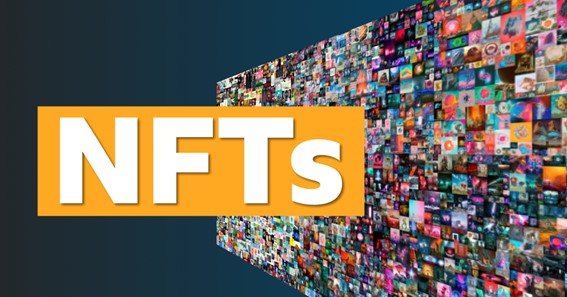NFTs, or non-fungible tokens, are digital assets that are unique and not interchangeable. Unlike traditional cryptocurrencies like Bitcoin or Ethereum, which are fungible and can be exchanged for other assets of the same value, each NFT is unique and cannot be replaced by another asset.
NFTs have become popular in recent years as a way to collect, trade, and use digital assets in games, art, and other online applications. While there is no one “use case” for NFTs, they offer a new way to own and use digital assets in a wide variety of ways.You can visit nft-profit.app for more information.
How do NFTs work?
NFTs are built on blockchain technology, which enables them to be stored securely and traded peer-to-peer without the need for a central authority. When you purchase an NFT, you are buying a digital token that is stored on a blockchain.
Each NFT has its own unique code, or “token ID,” that distinguishes it from other NFTs. This token ID is stored on the blockchain alongside other information about the NFT, such as when it was created and who owns it.
Because they are stored on a decentralized ledger, NFTs can be bought and sold like any other cryptocurrency. However, because each NFT is unique, their prices can vary widely depending on their rarity and usefulness.
What are the benefits of NFTs?
NFTs offer a number of potential benefits over traditional digital assets, such as files or images.
First, because they are stored on a blockchain, NFTs can be bought and sold easily and securely without the need for a central authority. This enables anyone to trade NFTs without having to go through a middleman, such as a game company or an art gallery.
Second, NFTs can be used to represent real-world assets. For example, you could use an NFT to represent ownership of a piece of digital art, a ticket to a virtual concert, or even a physical object like a car or house. This opens up new possibilities for how NFTs can be used.
Finally, because each NFT is unique, they can be collected and traded like physical items. This has led to the development of a new market for “digital collectibles” that are bought and sold by collectors.
What are some examples of NFTs?
One of the most popular use cases for NFTs is in games. The best-known example is probably CryptoKitties, a game that allows players to buy, sell, and breed digital cats. Each cat is an NFT, and because each one is unique, they can be traded for different prices depending on their characteristics.
Other popular games that use NFTs include Decentraland, a virtual world where players can buy, sell, and trade virtual land; Axie Infinity, a game that allows players to collect, train, and battle digital creatures; and Gods Unchained, a card game that uses NFTs for its in-game cards.
NFTs are also being used to represent real-world assets. The most well-known example is probably the CryptoPunk, a digital collectible that represents ownership of a limited edition digital punk character. CryptoPunks have been sold for prices as high as $7 million, making them some of the most valuable NFTs in existence.
Other examples of NFTs that represent real-world assets include Cryptocurrency Alpacas, which are digital collectibles that represent ownership of real-life alpacas, and Decentraland LAND, which represents ownership of virtual land in the Decentraland world.
What are the risks of NFTs?
NFTs are a new and emerging technology, and like all new technologies, they come with risks. The most well-known risk is that because NFTs are stored on blockchains, they are subject to the same hacking risks as any other cryptocurrency. If an NFT is stolen or lost, it may be very difficult to recover it.
Another risk is that because NFTs can be used to represent real-world assets, they may be subject to fraud or manipulation. For example, if someone sells you an NFT that represents a piece of art, but the art doesn’t exist, you may have no recourse.
Finally, because NFTs are unique and can be traded like physical items, their prices can fluctuate widely. This volatility can make it difficult to predict the value of an NFT, which may make them a risky investment.
What is the future of NFTs?
The future of NFTs is still being written. However, there are a number of potential applications for this new technology.
One possibility is that NFTs could be used to represent ownership of physical assets, such as property or vehicles. This would enable people to buy, sell, and trade these assets without the need for a central authority, such as a government or a bank.
Another possibility is that NFTs could be used to represent shares in companies or other organizations. This would enable people to invest in companies without having to go through a broker or an exchange.
Finally, NFTs could be used to create new types of digital collectibles. For example, you could use an NFT to represent ownership of a virtual pet or a digital artwork. As the technology develops, it’s likely that we will see more and more creative uses for NFTs.







